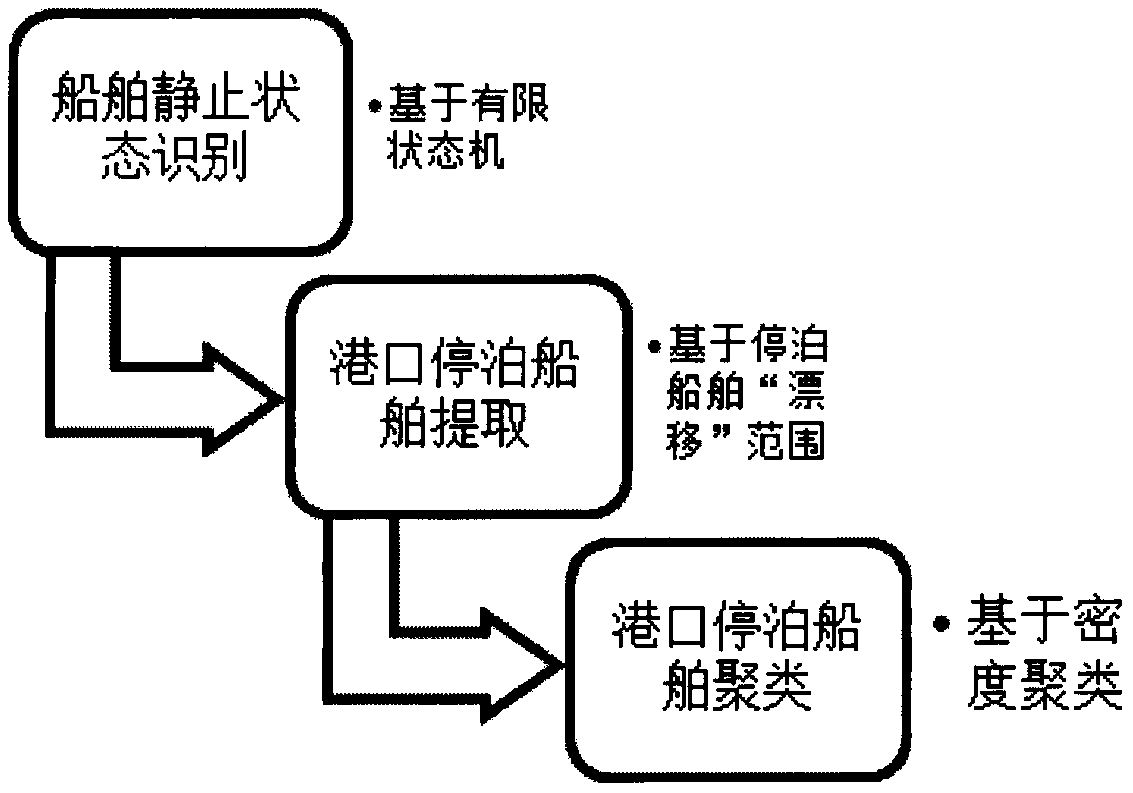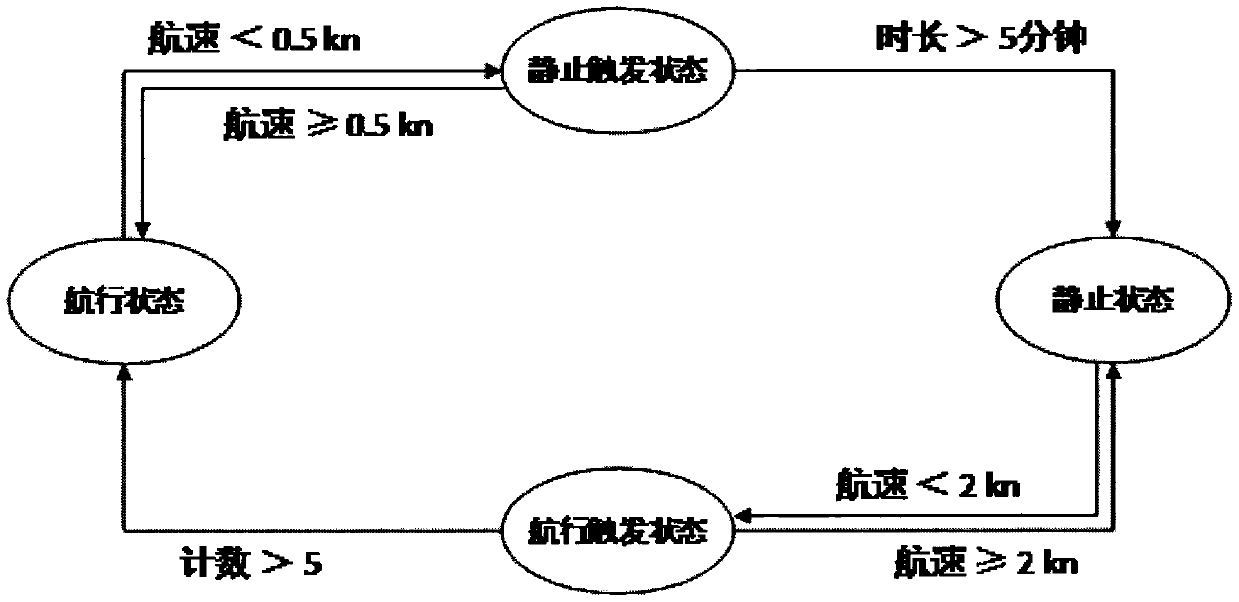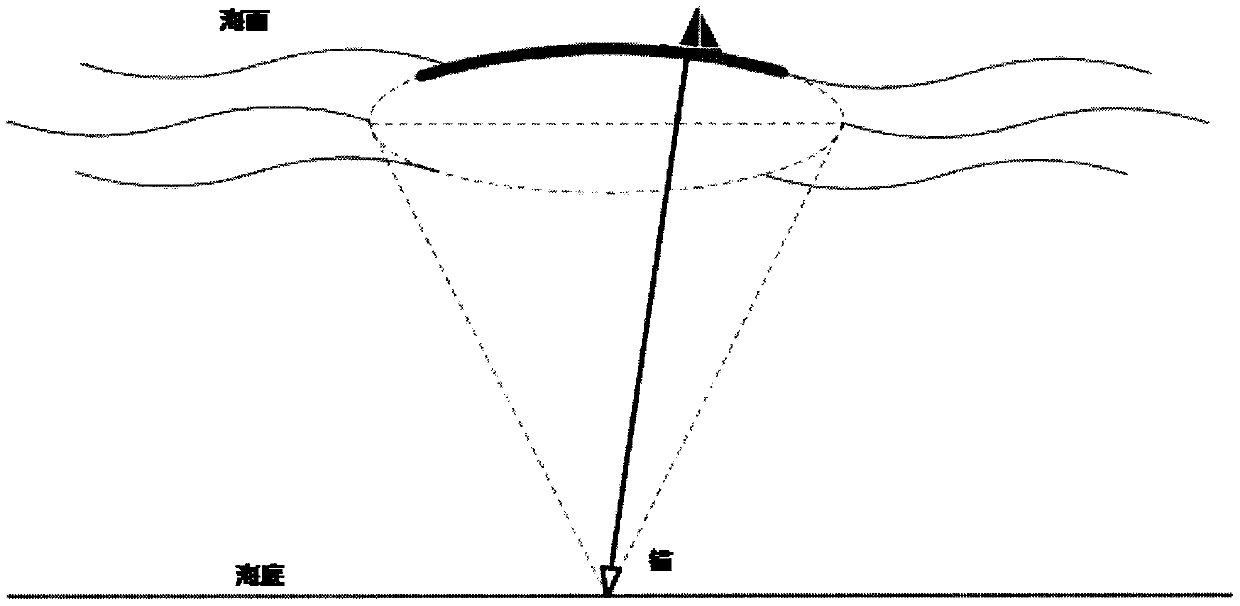A port identification method based on ship track big data
A technology of ship trajectory and identification method, which is applied in the field of port identification, and can solve the problem of port identification without ship trajectory data
- Summary
- Abstract
- Description
- Claims
- Application Information
AI Technical Summary
Problems solved by technology
Method used
Image
Examples
Embodiment Construction
[0032] see figure 1 , The port is a transportation hub for ships to safely enter and exit and berth, an assembly point and hub for water and land transportation, and it is also the key basic information for analyzing ship behavior activities. The identification of traditional ports is mainly based on satellite remote sensing images. When the basic information of prior port analysis is lacking, the location and range of ports can be automatically identified and extracted by analyzing and identifying the activity status of ships and the group behavior formed by surrounding ships. Extracting port distribution information through ship track data mining can also identify "potential" or even "smuggling" berthing dock information. The port automatic identification method is divided into three steps: ship static state identification, port berthing ship extraction, and port berthing ship clustering.
[0033] The port identification method based on the big data of ship trajectory provi...
PUM
 Login to View More
Login to View More Abstract
Description
Claims
Application Information
 Login to View More
Login to View More - R&D
- Intellectual Property
- Life Sciences
- Materials
- Tech Scout
- Unparalleled Data Quality
- Higher Quality Content
- 60% Fewer Hallucinations
Browse by: Latest US Patents, China's latest patents, Technical Efficacy Thesaurus, Application Domain, Technology Topic, Popular Technical Reports.
© 2025 PatSnap. All rights reserved.Legal|Privacy policy|Modern Slavery Act Transparency Statement|Sitemap|About US| Contact US: help@patsnap.com



